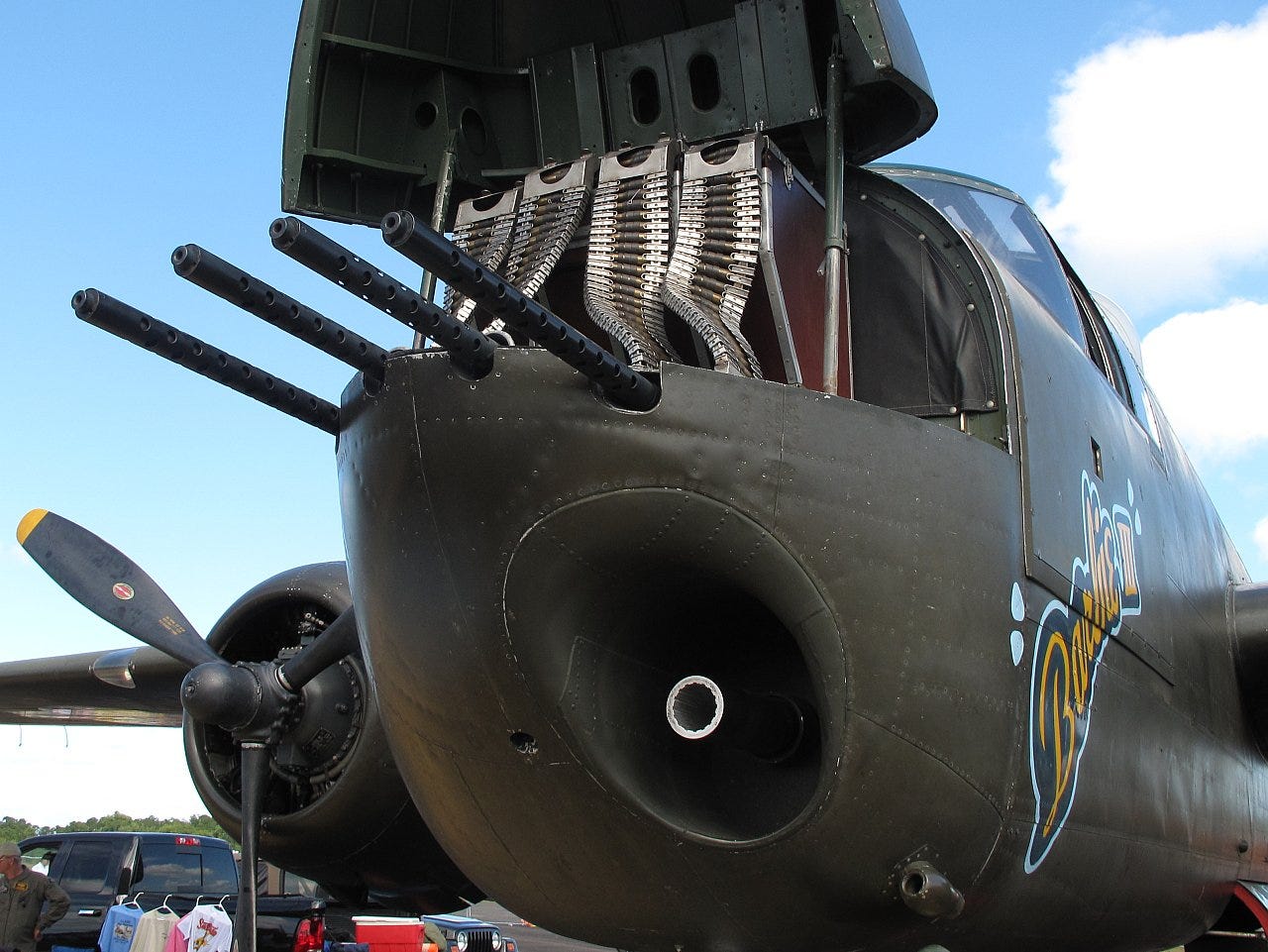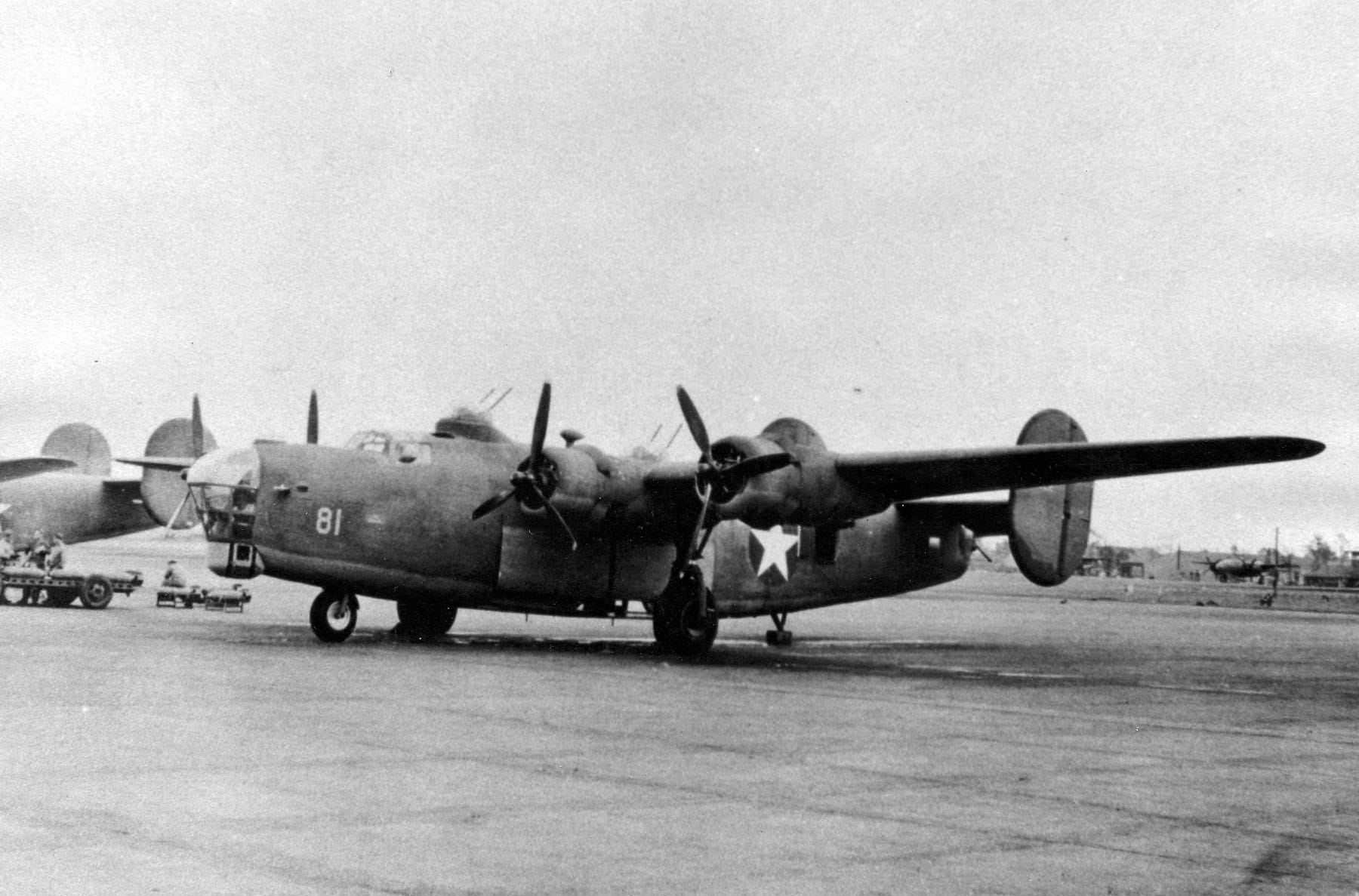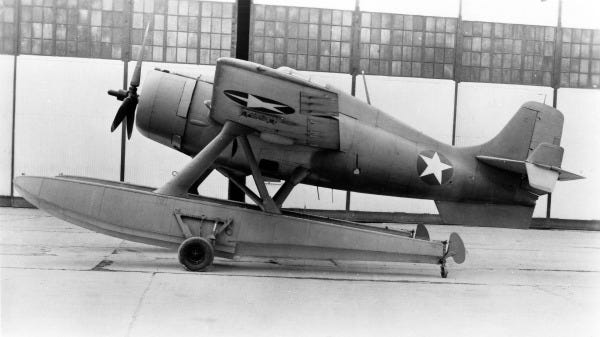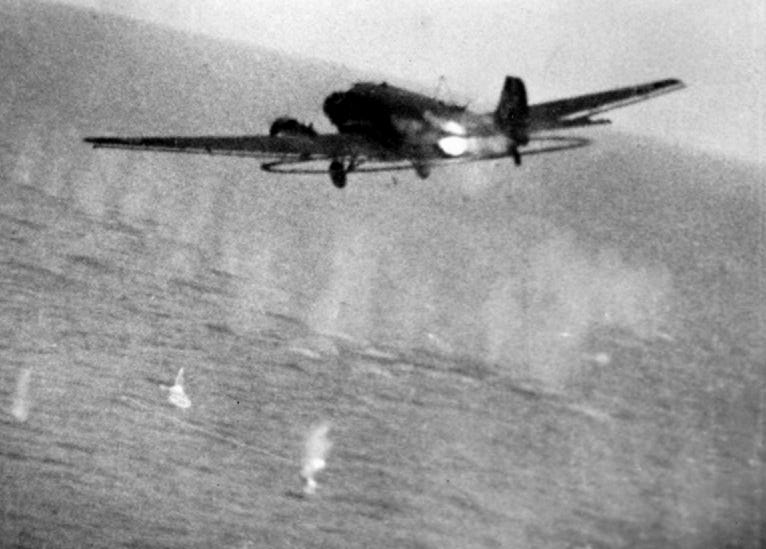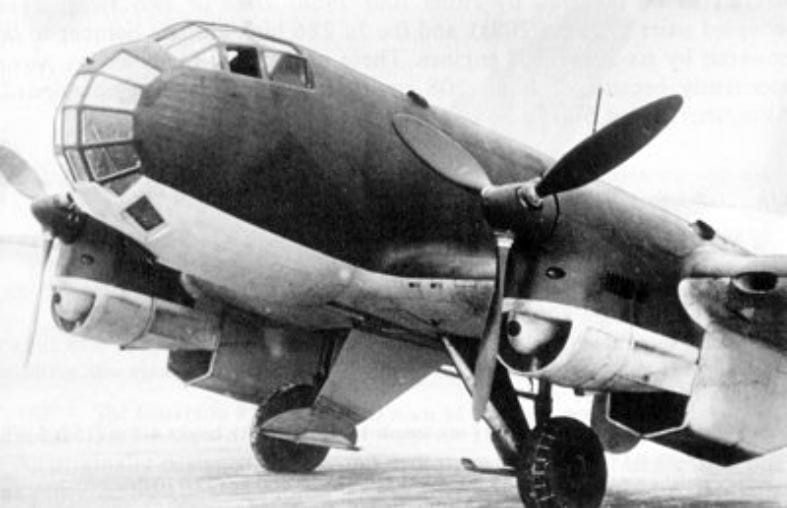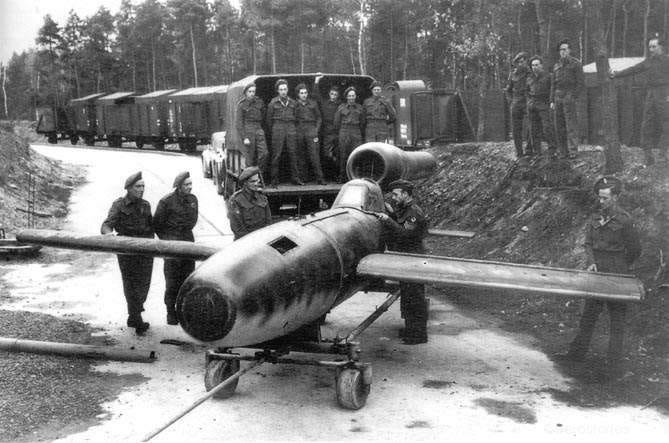10 Extreme Warplane Modifications of the Second World War
The Wildest Aerial Makeovers
`
Vast swarms of aircraft were built during the Second World War as combatants constantly tried to seize an advantage. With so many aircraft, it made sense to modify an existing aircraft rather than come up with something new. What follows are ten such modifications. This includes crewed missiles, flying tanks, ludicrous firepower, and fighters grafted together to form new conjoined machines. Some were brilliant, some were appalling failures, a few were outstandingly successful, and all shed light on a terrifying innovation race with the highest possible stakes.
10: US Heavy Bomber fighter conversions: YB-40 and XB-41
‘Overweight, overarmed and over here.’
During the Second World War, converting fighters into bombers was a fairly commonplace occurrence, but examples of bombers that became fighters were far rarer. Those that were tended to be small, fast bombers such as the de Havilland Mosquito; the idea of a heavy bomber becoming a fighter seems absurd.
Yet the USAAF attempted exactly that, converting examples of both the B-17 Flying Fortress and B-24 Liberator into escort fighters. Only one example of the XB-41, modified to carry fourteen .50-calibre machine guns and over 14,000 rounds of ammunition, was built. Although testing proved problematic, the B-17 conversion proved more successful.
The Boeing YB-40 was equipped with up to thirty defensive guns, though it typically carried fourteen or sixteen. Armament was mostly .50 calibre machine guns in various configurations, though 40-mm cannons were also tested. Twenty-five examples were built, and the aircraft was tested on combat missions over Europe.
No aircraft has ever flown with such a formidable gun-based defensive armament. Unfortunately, this made the aircraft so heavy and slow that it couldn’t keep up with the bombers it was supposed to protect. After participating in just ten missions, the entire project was abandoned.
9: Grumman XF4F-3S ‘Wildcatfish’
Various land-based fighters were converted to become seaplanes during the Second World War. A few were very impressive, like the Spitfire floatplanes<link to fast water plane article>; some of the others were, to put it kindly, somewhat underwhelming. One such was the floatplane derivative of Grumman’s spectacularly successful F4F Wildcat, which was developed in 1942.
Inspired by the Japanese use of floatplane fighters from remote island bases in the Pacific, the float manufacturer Edo was contracted to convert a standard F4F-3 fighter to operate from water. As well as the floats, the aircraft required a ventral fin as well as auxiliary fins on the tail to maintain stability.
The Wildcat was a slow fighter to start with, slower than its primary foe, the Mitsubishi Zero, and the addition of two hefty floats and their supporting struts chopped the maximum speed down to a pretty woeful 241mph. It was, therefore, obvious the floatplane could only be used where fighter opposition was unlikely.
Despite this, 100 sets of Wildcat floats were produced in great haste, but only one floatplane conversion, nicknamed the ‘Wildcatfish’, was ever constructed. The ability of US forces to rapidly capture or construct remote island airbases saw the requirement for a floatplane fighter effectively evaporate.
8: Aerial minesweepers ‘Minecrafty’
Magnetic mines posed a significant threat to shipping: 79 ships were lost to mines by the end of 1939 alone. The British responded swiftly with a modified Wellington bomber fitted with a 48-foot-diameter balsa-wood ring containing aluminium coils that emitted magnetic impulses when charged by an electrical current.
The electrical ring mimicked the magnetic signature of a ship to detonate mines below the surface. Aircraft were much faster than conventional minesweepers, allowing them to clear large areas at high speed. The process was hazardous, however, requiring crews to fly at 130 mph just 35 to 60 feet above the water.
Aerial minesweepers
At such low altitudes, the aircraft were also liable to damage, or even destruction, from the mines they were detonating. Nonetheless, minesweeping Wellingtons proved highly successful, keeping the Thames Estuary clear of magnetic mines for the duration of the war and able to respond quickly to suspected minefields or to clear specific areas.
The Germans also employed the same technology, using the Bv 138 flying boat and Ju 52/3m transport. However, German minesweeping operations were hampered by Allied fighters; one famous photo shows a Ju 52 under attack by a Hawker Typhoon. Surviving German minesweepers were used postwar to clear remaining minefields.
7: High altitude combat: Ju 86 and Spitfire ‘Because I got high’
The Ju 86 was an unexceptional medium bomber that was nearing the end of its operational life in 1939 when Junkers modified it into the Ju 86P high-altitude aircraft, featuring a hugely extended wingspan, a pressurised crew compartment, and turbocharged diesel engines, enabling it to operate at 40,000 feet.
40 Ju 86Ps conversions were built and operated with impunity over Britain, conducting reconnaissance and nuisance bombing. The improved Ju 86R variant followed with an even greater wingspan and enhanced engines, allowing for flight at 47,000ft. Although never causing much material damage, the uninterceptable Ju 86 raids proved infuriating.]
High altitude combat: Ju 86 and Spitfire
High-altitude Spitfires Mk VI and VII (pictured) were developed with extended wings and pressurised cockpits, but by this point, lightened Spitfire IXs were coaxed high enough to effect an interception. The highest known combat of the war occurred when a Spitfire IX damaged a Ju 86 at 44,000ft.
Although that particular Ju 86 was not been destroyed, the realisation that the RAF was capable of intercepting the high-flying bombers resulted in their withdrawal from missions over the British Isles. Two Ju 86s were subsequently lost to Spitfires in the Mediterranean, causing Ju 86 operations in the West to cease altogether.
6: Fieseler Fi 103R ‘Reichenburg’ ‘Suicide Squad’
Desperate times call for desperate measures, but few measures were ever as desperate as the Fieseler Fi 103R. Consisting of a V-1 cruise missile with a cockpit crammed in behind the 900kg warhead, the pilot was expected to point the aircraft at its target before bailing out.
The standard V-1 was fast and cheap,
Keep reading with a 7-day free trial
Subscribe to Hush-Kit Aviation Newsletter to keep reading this post and get 7 days of free access to the full post archives.

